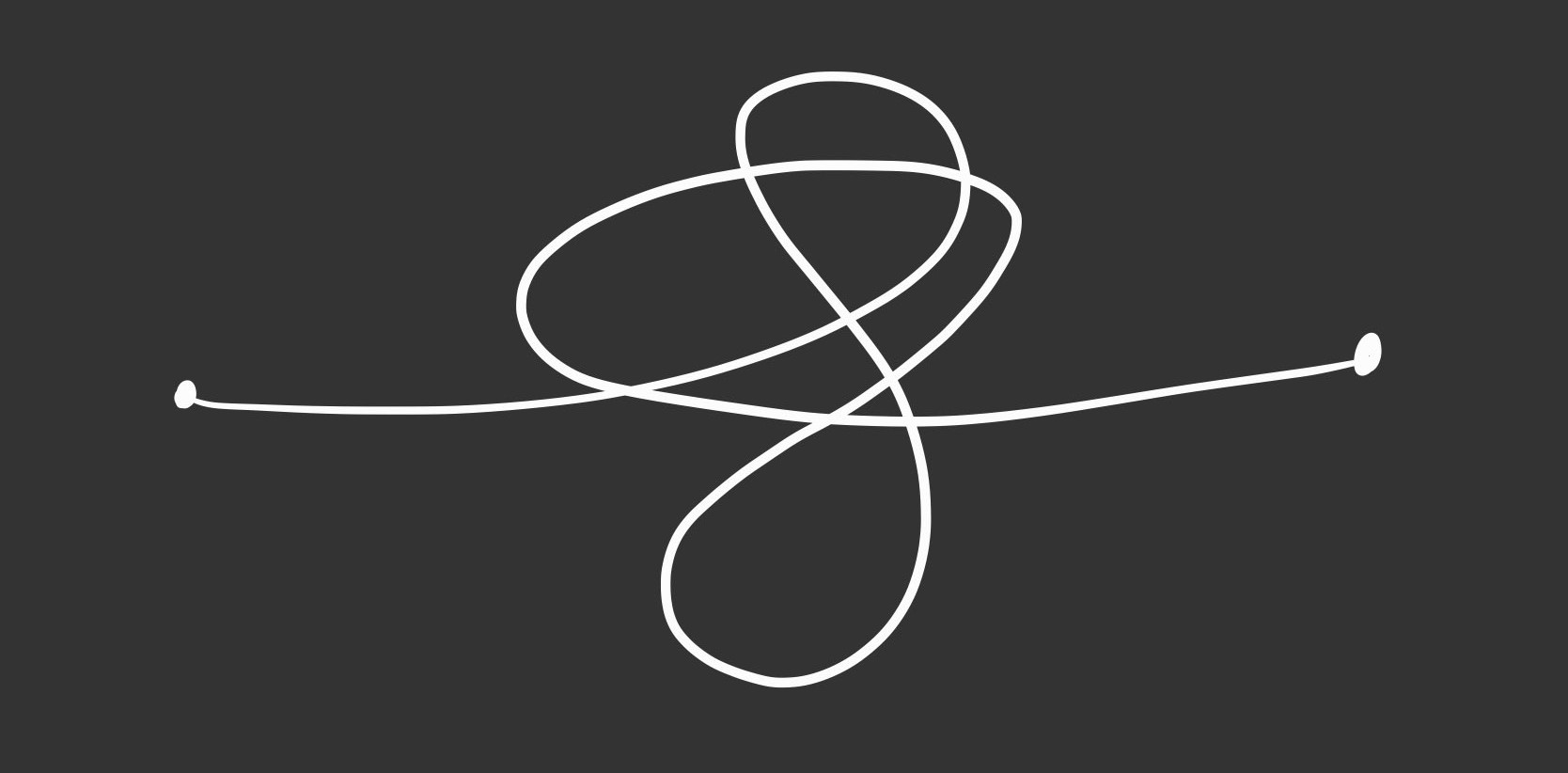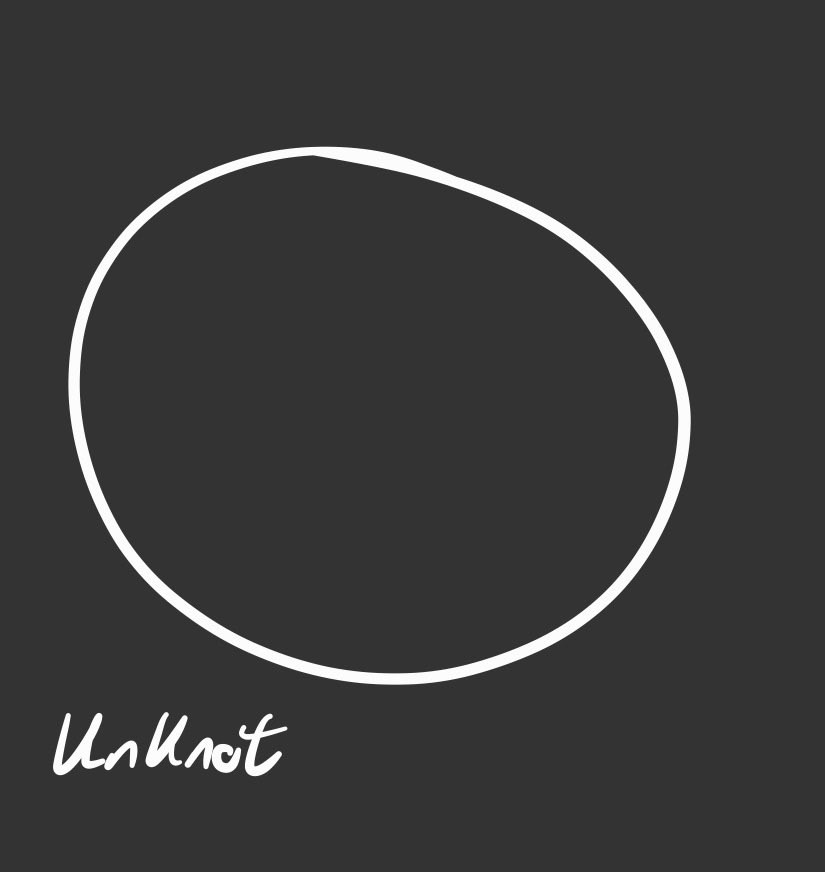Why study knots?
So why on earth would we want to study knots?! Well, if you dont mind me offloading some work from here go watch that video I mentioned earlier. However I can highlight some of the motivation I had to read about knots and their theories.
Let's start with trying to draw some knots, but lets think about it for a second. Our first attempt of a knot on a page might be some tight, scrambled looking mess with a start and end of our rope, far from our knot.

Lets try to expand them to highlight some detail in their turns and folds.

Now we have something more appealing, with some symmetry perhaps, though not very symmetric to any other part, but smooth in shape. Still our rope looks kind of bad. We think of a rope in 3 dimensions after all so lets add some "dimensionality" to our rope by removing bits of line as our rope goes under and over itself. You may think of the solid line as a bit of rope passing over another, while the slighlty erased line may imply the rope passing below the other.

If we would like to keep moving about little sections of this rope, we could move the start and end of our rope or string and untie the knot, rather sad, because we want to keep these knots in our structure we created. So we join start and end together to kind of "seal" this knot within our rope.

And so we end up with what is known as a "knot diagram". Pretty cool eh? Reviewing this paragraph I realised I didn't provide much motivation for where you may start to think about knots in the first place, but in the end I find the continiuity and symmetry of these knots rather interesting and fun to look at, trying to decipher what kind of knot it is or what it may look like. Then again classification of knots is THE problem in knot theory so, the more you know.







